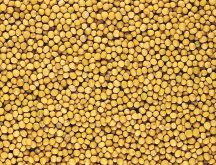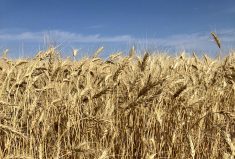CNS Canada — Canadian mustard prices are holding steady but facing stiff competition from Ukraine, according to market participants.
“What the market is seeing (for a) bid is 32 to 33 cents for yellow. A bit in the high 20s for brown mustard,” said Walter Dyck, a buyer with Wisconsin-based Olds Food Products.
Values are down from the peaks they saw this summer, he added, when some yellow mustard traded at 39 to 40 cents a pound.
Dyck said he felt the demand is there for Canada to ship 125,000 tonnes of mustard to buyers in the U.S. and overseas — Canada’s typical average.
Read Also

U.S. grains: Soy futures set 15-month high after China agrees to purchases
U.S. soybean futures reached a 15-month high on Thursday after President Donald Trump’s administration said top-importer China agreed to buy tens of millions of tons of American crops in the next few years as part of a trade truce.
He will, however, be watching out for Canada’s main competitor, Ukraine. “Right now indications are that Ukraine is moving mustard towards Western Europe,” he said.
His concern is echoed by Patrick Ackerman, a grower from Chamberlain, Sask. and chairman of the Saskatchewan Mustard Development Commission.
“Europe is slow to buy right now because the Ukrainians are dumping a lot of mustard. There’s turmoil, they’re going to sell it to make some cash,” he said.
Both said this year’s wet conditions drowned out some acres in Canada’s eastern growing region, but it should still be a decent crop.
“Conditions weren’t great this year so I don’t think that we will have an oversupply, but I think we have enough supply to keep up with the demand,” said Ackerman.
Dyck estimated 85 to 90 per cent of the crop coming in will be No. 1 quality, judging from samples he has seen so far.
“There’s a bit of rime damage, but it’s not really of any consequence,” he said from Lethbridge, Alta., where he’s based.
Rime is caused by rain or cool temperatures prior to maturity, causing the mucilage in the hull to emerge and coat the seed. Buyers and processors may downgrade a rime-covered shipment.
“Back in 2010 that was a problem,” said Dyck.
Ackerman also didn’t expect the transportation gridlock that has plagued other western Canadian crops to impact mustard.
“I think some of these problems we had last year have worked their way through the system. I think we’ll be OK,” he said.
— Dave Sims writes for Commodity News Service Canada, a Winnipeg company specializing in grain and commodity market reporting.












